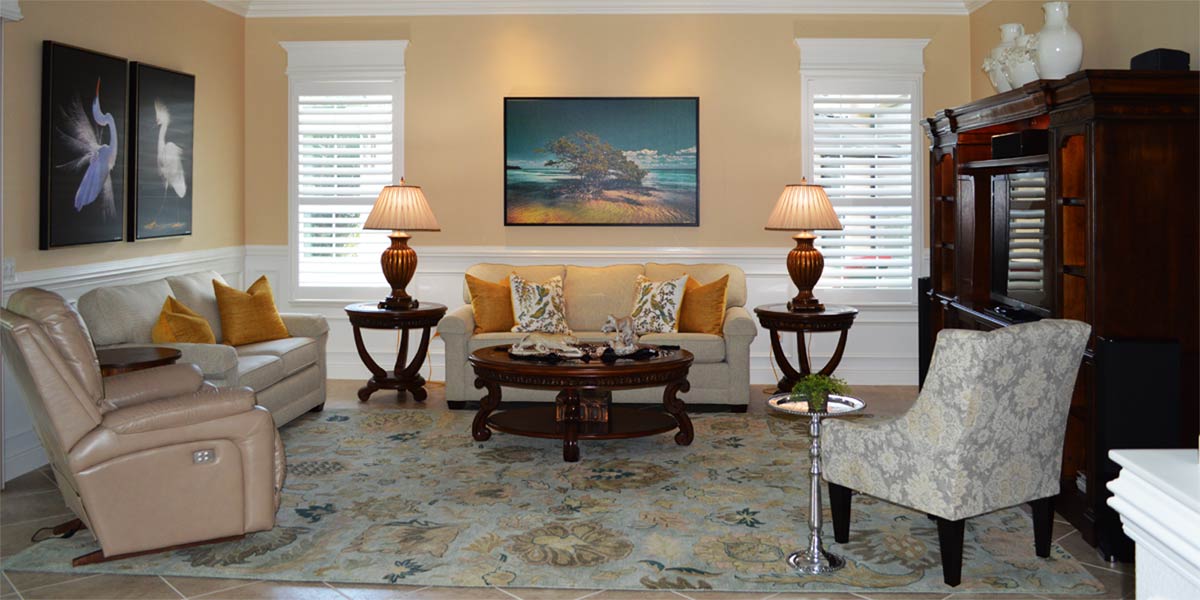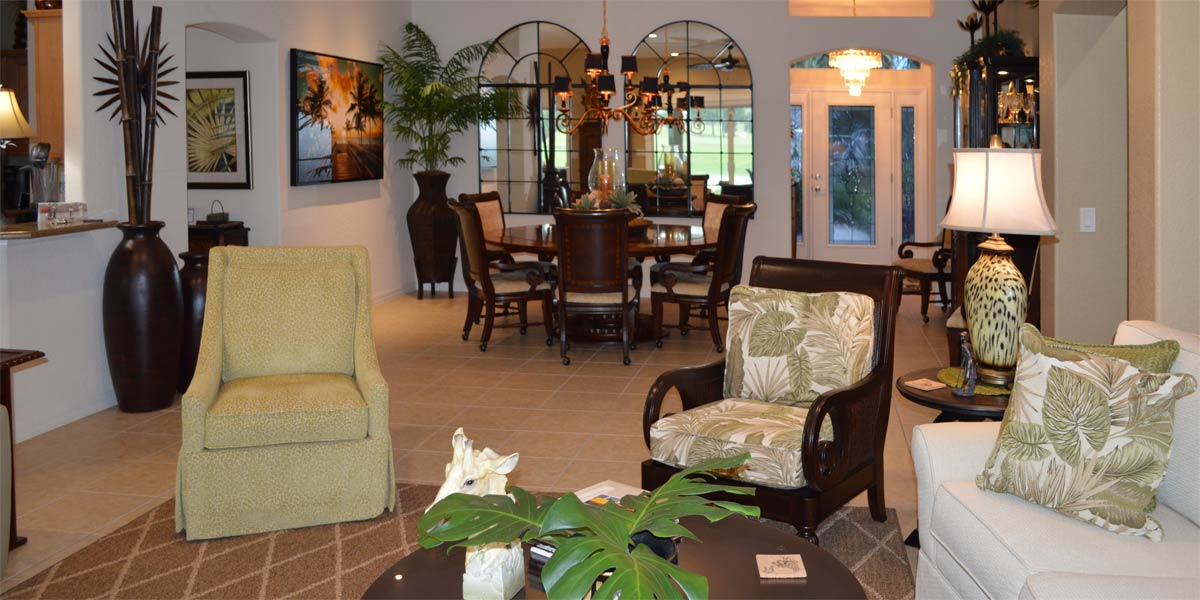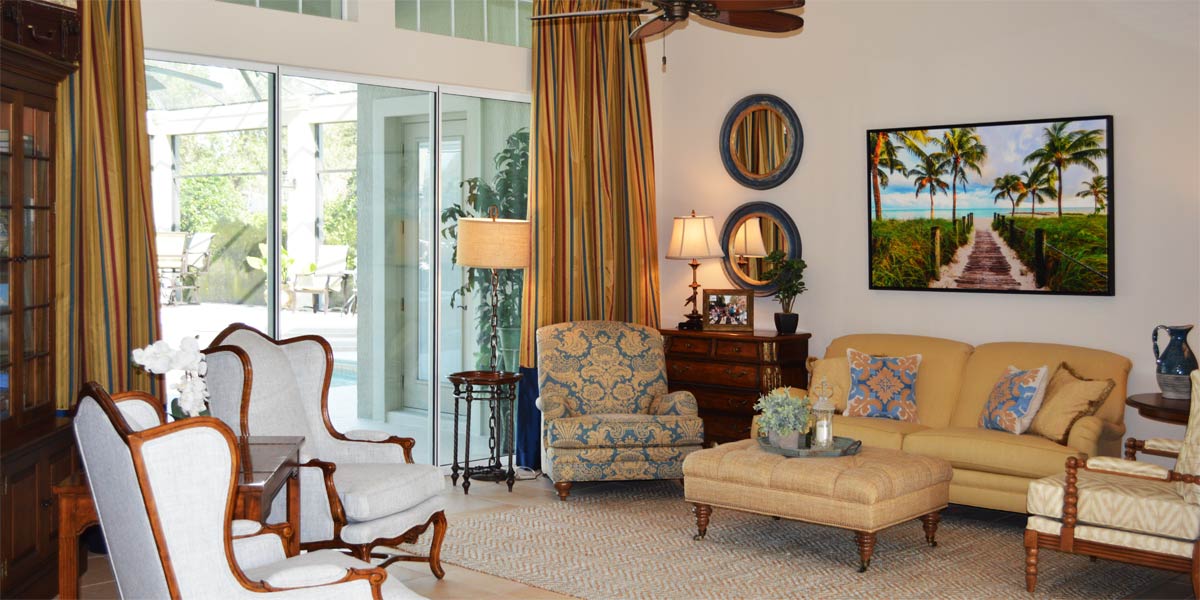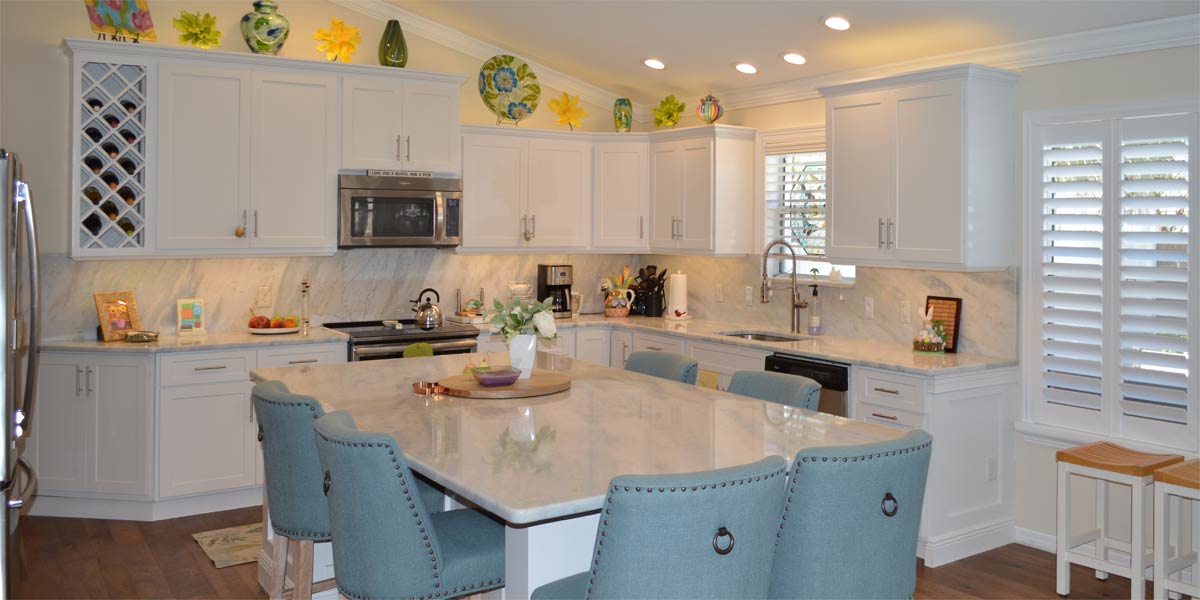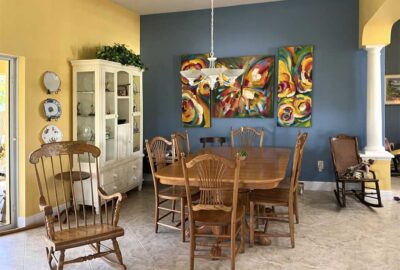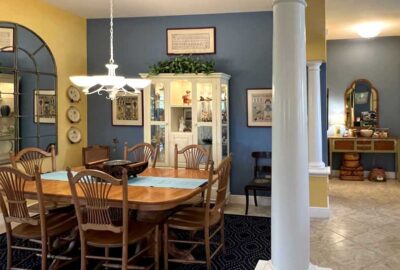Creative Process
Have you ever discussed with your partner how to move the furniture around in a room of your home? Did that discussion lead to anything? Did anyone move furniture or did one or both of you decide that the task could be tackled tomorrow or at least not today? Finally, when the time arrived to tackle the furniture move, was there more discussion that lead to disagreement and then one or both of you decided just to leave it the way it is? This is a scenario that happens so often when homeowners are trying to make a change in a space that I chuckled as I wrote about it. Last week we talked about the décor edit and some of the principles that make a décor edit successful. This week we will talk about the actual creative process that allows the principles to work. Let’s take a peek into the dining room of the Gardenia model from last week to see how the creative process produced a fabulous décor edit somewhere in the heart of The Villages.
• Work Flow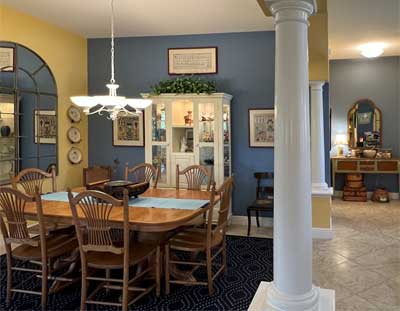
Have you ever been trying to work on something and someone comes into your work space and starts asking you questions? You feel a thought coming on and then someone breaks into the thought flow with a question? Often, the thought will be lost and it takes you a moment to get back to the thought. It is frustrating when you cannot get into a work flow. The work flow is the space in your mind where you are singularly focused on your task and one thought will lead to another thought and eventually you will come up with something new in regards to your project. It is important to limit discussion when moving furniture.
• Do not re-discuss moving the furniture
If you have decided you are moving the furniture do not discuss everything again. Too much discussion leads to more analyzation which leads to a big stop sign.
I am sure that everyone reading this can think of someone they know or maybe you are that person that analyzes things so much that all the energy is taken by the analysis of moving the furniture. When it comes time to move the furniture you are mentally exhausted and therefore physically exhausted. So the room stays the same. This constant analyzation comes from fear of being wrong. You may be wrong but you won’t know until you try. You may also be right but you will not know until you try.
• Just move your body and the furniture
I find that when I engage in a décor edit, I need to just get moving. The very act of moving your body and the furniture allows the creative juices to start flowing. Touching the furniture, handling the décor, and the very act of moving the furniture gives you more ideas about moving the furniture. I may have one idea in mind and the very act of performing the décor edit may give me another idea that I would have not thought about because the furniture had to be moved to get the idea.
• Do not use the word “no”, and have a tape measure before you start.
All ideas about moving the furniture are to be tried before they are rejected. This is very important! The word no is a stop sign and a stop sign will stop motion. If you stop physical motion you stop creativity. During the décor edit the word no is not allowed. We only say, “Yes let’s try it”, or “O.K. let’s do a quick measure to see if it fits.” The tape measure must be ready when needed because if you have to stop to find the tape measure that interrupts the work flow. The act of trying something will let you know if it works in the space because it will either look right or it will not. When the word “no” is dis-allowed the process of moving the furniture becomes collaborative and levels the playing field of control. Both parties have to participate and try everything that is offered up so control goes by the wayside.
• Let’s take a peek at the dining room
We removed the pictures from the space and placed the china cabinet on the largest wall in the dining room. This white china hutch worked well on this wall because it is the focal wall in the space and it mimics the white of the entertainment unit on the large wall in the living room.
• Place the table straight
We moved the table back into the space and centered it on the china hutch which was centered on the wall. The room began to feel balanced and centered.
• Palladian mirror
When we moved the china hutch off the small wall of the dining room, there was a space left between the two hanging plate rakes. That was a perfect spot for the Palladian mirror. So, the homeowner purchased the mirror and once it was hung, the plates looked perfectly complementary to the mirror.
• Rugs
Rugs were an issue for the homeowners because they have a senior dog. They wanted something that could be washed easily. The homeowner picked up two 5’x7’ indoor/outdoor rugs and we placed them together seam to seam to create a 10’ by 14’ rug. We used Alien tape to keep the seams down in the middle and that worked perfectly!
• Cross stitch
With the large art moved and the china hutch on the large wall, that left room for us to hang three very sentimental cross stich pieces. The dining room really reflected the history of the family and everything was very treasured and personal.
• Wall color
The wall color stayed the same and we are going to re-paint the same colors. The colors are well loved but just need refreshing and they really reflect the happy and bright spirits of the homeowners.
• Hallway
The hallway to the laundry room and master bedroom received a refresh as well. We placed a thin table in the space with baskets below to fill the negative space and hide cords. We hung a rustic arched mirror above the piece to reflect the window in the living room and bring in more light. Finally, we displayed antique pharmacy pestle and mortars that belonged to the homeowner’s grandfather.
Call Ruth your full service decorator at: 352-804-2056 or Contact Us
